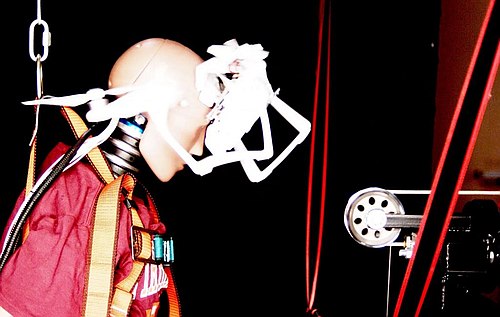Podcast: Play in new window | Download (Duration: 32:38 — 22.4MB)
Measuring kinetic energy to certify drone flights over people, additional funding for Dedrone, documenting endangered heritage sites, Italian heavy-lift multirotors, testing the MQ-25 refueling drone on an aircraft carrier, defining the “next” Reaper, an FAA grant for UAS training, and Navy harassment by drone swarms.
UAV News
Test methods for drones help put a crucial rule for safe flights over people into practice
To certify drones for flight over people, the FAA links injury severity to kinetic energy. But the classic calculation of kinetic energy using mass and velocity makes some assumptions that aren’t applicable to a drone hitting a human head. So the Virginia Tech Mid-Atlantic Aviation Partnership (MAAP) along with the Department of Biomedical Engineering and Mechanics developed a testing methodology for the actual kinetic energy from a drone impact.
Dedrone Secures $30.5 Million Series C to Protect Airspace Against Unauthorized Drones
Axon Invests in Dedrone: Partnership Between Public Safety and Counter Drone Technologies
Airspace security company Dedrone closed a $30.5 million Series C financing round led by Axon and including previous investors. Dedrone sold over 1,000 sensors in the past year that detect, identify, and locate over 200 different types of drones. Customers include more than 65 critical infrastructures, 50 correctional facilities, 20 airports, 10 Fortune 500 companies, and four of the seven G-7 nations.
Using drones to capture coastal heritage before it’s lost
The Seaford Head Project wants to assess and record the archeology of Seaford Head before it is lost to coastal erosion. They are developing ways to quickly assess the situation and record the data, including using drones to survey the site and create 3D models. The project intends to create a template that can be replicated for other heritage agencies, landowners, and community groups.
Two Italian heavy-lift drones deliver 52 kg of cargo in Turin
Italian company FlyingBasket flew two FB3 drones, each carrying 26 kg (57 lb) of cargo, from a postal center to a destination 3.9 km (2.4 miles) away, then returned to the postal center. For the demonstration, FlyingBasket partnered with Leonardo and the Italian postal service. The FB3 drones were flown mainly over the Stura di Lanzo river. One FB3 carried its load in an internal compartment, while the other in a sling hung on a hook.
MQ-25 winds up deck handling tests on US aircraft carrier
The MQ-25 Stingray UAV has been tested by Boeing and the US Navy on an aircraft carrier to assess deck handling characteristics. The MQ-25 is intended for air-to-air refueling missions. The MQ-25 taxied, connected to catapults, cleared the landing area, and practiced parking. The USN has plans for initial operational capability by 2024 and to purchase as many as 76 aircraft.
Promotional video from Boeing: MQ-25 Completes First U.S. Navy Carrier Tests
“MQ-Next”: The U.S. Air Force’s Plan for an Unmanned Aircraft
The Air Force is developing a plan for the MQ-9 Reaper replacement aircraft, called “MQ-Next.” It might not look like the MQ-9 – perhaps smaller, stealthier, and more lethal. The MQ-Next might operate in swarms and will likely be networked with manned-unmanned teaming. It’s not expected to be operational until 2031 so there is plenty of time to define the requirements.
Flying high: FAA funds NMC’s high school drone education program
Northwestern Michigan College received a $90,000 grant from the FAA. Forty high school teachers will be trained on the fundamentals of Unmanned Aerial Systems. Each teacher will receive a multi-rotor drone to use with their own students. Congress appropriated $5 million to the FAA to grant projects like this. The grant builds on NMC’s selection in 2020 under the UAS Collegiate Training Program.
Harassment Of Navy Destroyers By Mysterious Drone Swarms Off California Went On For Weeks
This occurred in 2019, but new details are emerging after examining documents released under the Freedom of Information Act (FOIA). The sightings occurred throughout July 2019. Drone countermeasure teams were activated and in one event, at least three ships observed multiple drones. The destroyer USS Paul Hamilton made abrupt changes in direction, and the drone followed it. Counter UAS exercises were executed
UAV Video of the Week
Jaybyrdfilms’ insane drone video inside live baseball workout

